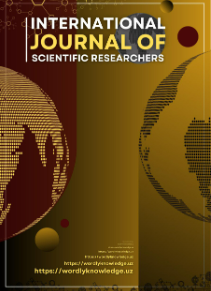PM 1, PM 2.5 IN THE ATMOSPHERE IN DRY CLIMATES; CREATION OF A SAMPLING DEVICE FOR PM2.5 PARTICLES
Keywords:
PM2.5, particulate matter, air quality monitoring, sampling device, optical sensor, public health, environmental monitoring, real-time data, cost-effective, field trials.Abstract
This paper presents the design, development, and testing of a novel sampling device for measuring PM2.5 particles in the atmosphere. The device integrates advanced optical sensing technology with a user-friendly interface to provide accurate, real-time data on PM2.5 concentrations. The development process included conceptual design, prototyping, laboratory testing, and field trials in various environments. Results demonstrate the device’s reliability, sensitivity, and cost-effectiveness. By addressing limitations of existing methods, this new device offers a valuable tool for public health, environmental monitoring, and regulatory compliance. Its affordability and portability make it accessible for widespread use, empowering communities and researchers to monitor air quality effectively and implement mitigation strategies.
References
Baumbach, G., Vogt, U., Hein, K. R. G., & Oluwole, A. F. (1996). Atmospheric particulate matter concentrations in African megacities. Environmental Monitoring and Assessment, 37(1-3), 265-282. https://doi.org/10.1007/BF00546885
Burkart, J., Steiner, G., Reischl, G., Moshammer, H., Neuberger, M., & Hitzenberger, R. (2010). Characterizing the performance of two optical particle counters (Grimm OPC1.108 and OPC1.109) under urban aerosol conditions. Journal of Aerosol Science, 41(10), 953-962. https://doi.org/10.1016/j.jaerosci.2010.07.007
Chow, J. C., Watson, J. G., Green, M. C., Lowenthal, D. H., DuBois, D. W., Kohl, S. D., ... & Macias, E. S. (2000). Middle- and neighborhood-scale variations of PM2.5 source contributions in Las Vegas, Nevada. Journal of the Air & Waste Management Association, 50(5), 835-855. https://doi.org/10.1080/10473289.2000.10464162
Hinds, W. C. (1999). Aerosol technology: Properties, behavior, and measurement of airborne particles (2nd ed.). Journal of Aerosol Science, 30(1), 152-153. https://doi.org/10.1016/S0021-8502(98)00056-1
Li, N., Sioutas, C., Cho, A., Schmitz, D., Misra, C., Sempf, J., ... & Nel, A. (2003). Ultrafine particulate pollutants induce oxidative stress and mitochondrial damage. Environmental Health Perspectives, 111(4), 455-460. https://doi.org/10.1289/ehp.6000







